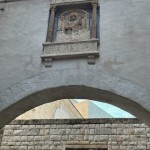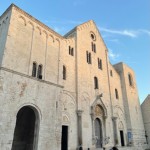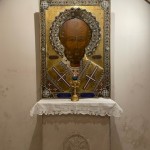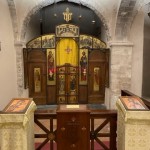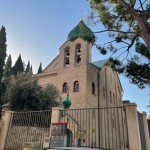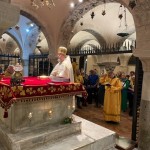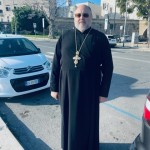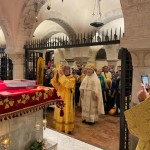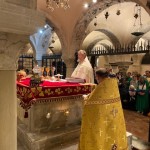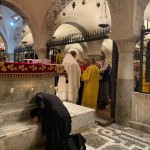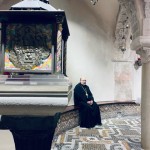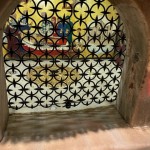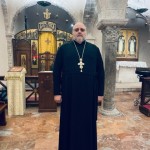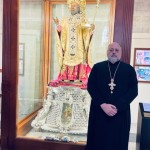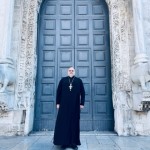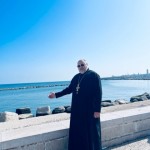Rector of St. George Church, Archpriest Igor Tarasov recently had a vacation trip to Italy. During that trip he visited a number of cities. Particularly, Fr. Igor made pilgrimages to the holy sites: the tombs of the Holy Apostles Peter and Paul in Rome, the relics of St. Jannuarius (also known as St. Gennaro) in Naples, and the relics of St. Nicholas the Wonderworker in Bari.
Our Rector’s visitation of St. Nicholas sanctuary in Bari was especially remarkable and is worth to mention. Fr. Igor arrived in the city on Wednesday, October 26 by train from Rome. On the evening of the same day he visited the Basilica of St. Nicholas where the relics of our beloved Saint are rested in the crypt.
We should recall that the holy relics of the Saint were translated to Bari from Myra in Lycia in 1087. In Myra (in Asia Minor, today’s Turkey) St. Nicholas used to live in the 4th century, being the archbishop of that city. There he served the people, worked miracles, then died and was buried. According to our Church tradition, that translation is deemed to be God’s will and was blessed by St. Nicholas.
In the 11th century the lands of the Byzantine Empire where Myra was located became endangered by the invaders and the holy sites were numerously desecrated and robbed by the Muslim hordes. That shocked all the Christians, both Eastern and Western. Christians in Italy were particularly concerned about the relics of St. Nicholas, especially because among them were many Greeks. The inhabitants of the city of Bari, located on the shores of the Adriatic Sea, decided to save the relics of their beloved Saint. In the year 1087 merchants from Bari and Venice went to Antioch to trade. Both these and others also proposed to take up the relics of St. Nicholas and transport them to Italy on the return trip. In this plan the men of Bari commissioned the Venetians to land them at Myra. The relics were not guarded and the monks who served at the temple where the relics rested were given guidance from the Saint himself. St. Nicholas appeared to one of them. In this vision he ordered the careful preservation of his relics. This account encouraged the citizens of Bari to take the relics.
On May 8 1087 the ships arrived in Bari, and soon the joyous news made the rounds of all the city. On the following day, May 9, they solemnly transported the relics of St. Nicholas into the church of St. Stephen, not far from the sea. The solemn bearing of the relics was accompanied by numerous healings of the sick, which inspired still greater reverence for God’s Saint. A year afterwards, a church was built in the name of St. Nicholas and consecrated by Pope Urban II.
Nowadays the church of St. Nicholas is a Roman Catholic papal basilica which is in the care of the Dominican Order. Both Catholics and Orthodox revere the Saint and make pilgrimages to that holy place. Many inhabitants of Bari bear the name Nicola in honor of the great Saint. Every Thursday morning an Orthodox Divine Liturgy is celebrated on the altar above the holy relics in the basilica’s crypt. There is also a small Orthodox side altar in the crypt. In addition, in 1913 a Russian Orthodox church was built in Bari and, of course, dedicated to St. Nicholas. Now it is a representation Church of the Patriarchate of Moscow.
On Thursday, October 27, Fr. Igor arrived in the basilica and prayed during the Orthodox Liturgy near the altar. The Liturgy was served by the Rector of the Russian Orthodox representation Church, Archpriest Viacheslav Bachin. He was co-served by the clergy from Poland, Serbia, Ukraine and USA. The service was attended by about a hundred pilgrims from different countries. Following the service Fr. Igor had an opportunity to venerate the relics beneath the altar.
Our Rector acquired candles blessed at the holy place, as well as the small container of water mixed with the myrrh flowing from the St. Nicholas relics. He will share those blessed things with our parishioners.

